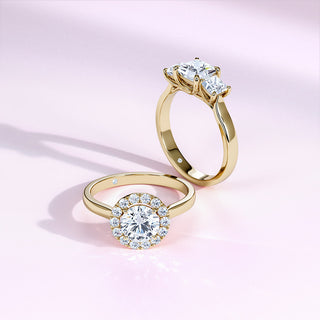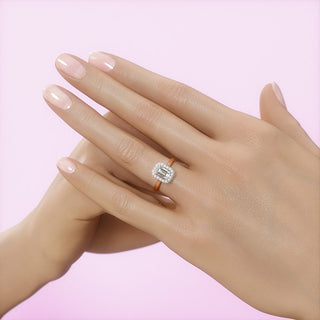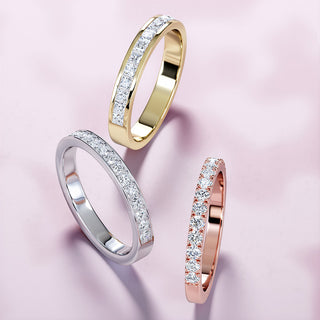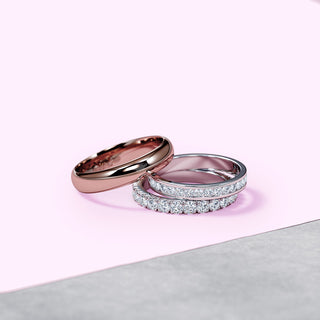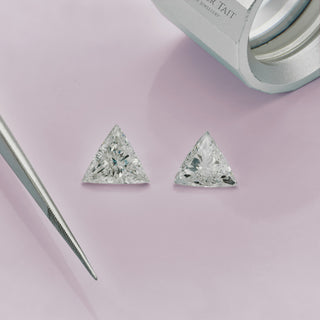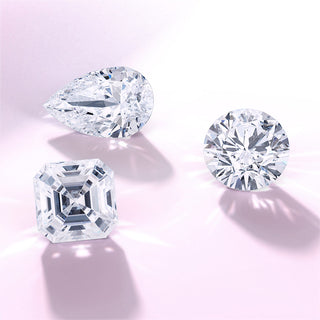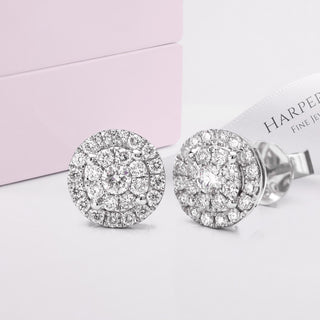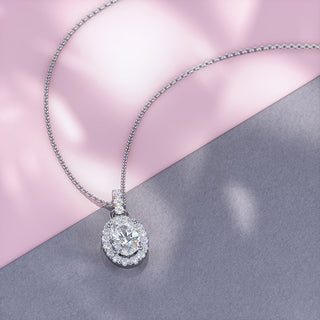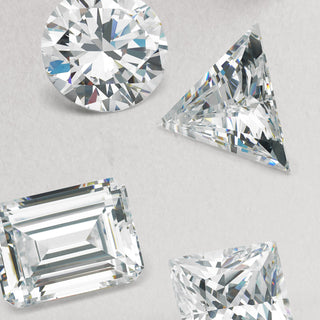
When choosing your engagement ring, diamond clarity is bound to be part of the decision-making process. Here, we explore what is the best diamond clarity for an engagement ring.
“ Working with a diamond expert is the best way to choose the best clarity grade for your engagement ring. Choose too high a clarity, and you’ll pay extra for little or no discernable difference. Choose too low a quality, and you may be disappointed by the appearance of your ring. “
Understanding Diamond Clarity
Diamond clarity is part of a diamond's overall quality and value, one of the four C’s alongside cut, colour and carat. The clarity of a diamond refers to how many or few ‘imperfections’ the stone has, known as inclusions and blemishes. Inclusions are found within a stone, while blemishes are on the outside of a stone.
Diamond clarity is rated on a scale that ranges from Flawless to Included, depending on how many inclusions and blemishes the stone includes. As the name suggests, Flawless diamonds (FL) have no inclusions or blemishes visible to the naked eye, while Included diamonds have obvious flaws. The higher the clarity grade, the more expensive the diamond is likely to be.

What are the different diamond clarity grades?
When we talk about diamond clarity grades, we often use the phrase ‘eye clean’. This simply means that to the naked eye, a stone looks clean of flaws.
- Flawless (FL): Flawless diamonds have no visible inclusions or blemishes, whether to the naked eye or under 10x magnification. Flawless diamonds are incredibly rare, and valuable.
- Internally Flawless (IF): Internally Flawless diamonds have no inclusions, but will have a few small blemishes on their surface. They are eye-clean.
- Very, Very Slightly Included (VVS1 and VVS2): With only minute inclusions, VVS diamonds are eye clean. Their inclusions are hard to see even under 10x magnification.
- Very Slightly Included (VS1 and VS2): VS diamonds have small inclusions that are only visible under 10x magnification. To the naked eye, a VS diamond is eye clean.
- Slightly Included (SI1 and SI2): SI quality diamonds have inclusions visible under 10x magnification. These may be visible to the naked eye, depending on the cut of the stone. In most brilliant-cut diamonds, an SI1-quality diamond will be eye-clean, and the inclusions will not affect the beauty of the stone.
- Included (I1, I2, and I3): Included diamonds have inclusions that, thanks to their number or size, are easily noticeable to the naked eye. These flaws may affect the diamond's brilliance and overall beauty.
At Harper Tait, we only buy diamonds ranging from SI to Flawless quality.
What is the best clarity grade for a diamond?
When choosing the clarity grade for your engagement ring, choosing an eye-clean stone is what really matters. Very few people will be viewing your ring through magnification!
Depending on the cut, diamonds of Very Slightly Included (VS) and Slightly Included (SI) grades should be eye clean. But clarity should always be considered alongside other quality factors.
A step-cut diamond shape such as an emerald or Asscher need a higher clarity and cut grade than a brilliant cut stone. This is because the sparkling facets of a brilliant cut, such as a round or princess shape soften the appearance of any inclusions. The large, light facets of step-cutting show off a diamonds’ clarity, so a higher grade is recommended for these stones.
The same is true of a very large stone. If choosing a high-carat weight diamond, consider going for a slightly higher clarity grade. The large facets of a high-carat weight stone will make inclusions more visible.
The positioning and colour of inclusions can also impact how visible they are. A dark inclusion or one positioning under the table (the central facet) of a diamond will be more noticeable than a paler inclusion at the edge of a stone.
What is the best clarity grade for an engagement ring?
With these variations in mind, we can consider what the best clarity grade for an engagement ring would be.
Clarity impacts the cost of a diamond, so there is a balance between budget and beauty. Happily, your chosen stone is likely to be stunning in an SI or VS grade - a diamond doesn’t need to be Flawless to be perfect for your engagement ring.
If you have chosen a brilliant cut stone, we suggest a clarity grade between SI1 and VS2. At these grades, you will not notice any inclusions, only the incredible sparkle of your diamond. For diamonds over 3.00ct, a higher grade might be advisable.
For a step-cut diamond, we advise choosing a clarity grade of no less than VS2. If your chosen stone is larger in size, consider grades of VS1 and above.
Our signature diamond quality is D-F colour and VS clarity. We love the beautiful match of colourless stone and perfectly eye-clean clarity.
How can I choose the right clarity?
Working with a diamond expert is the best way to choose the best clarity grade for your engagement ring. Choose too high a clarity, and you’ll pay extra for little or no discernable difference. Choose too low a quality, and you may be disappointed by the appearance of your ring.
It can be hard to picture the difference between clarity grades, particularly when much of the variation can only be seen with magnification. If you are able, booking an in-person consultation gives you an opportunity to compare different diamond clarities and qualities.
It’s important to purchase diamonds from a reputable source so you know the advertised clarity is accurate. Choosing a certified diamond is a good way to ensure this. At Harper Tait, we certify all individual diamonds over 0.25ct with GIA, the world’s most reputable diamond laboratory.
A diamond expert will know what clarity is best for your chosen ring style, diamond shape, and budget. We have the insider experience to help you find the most beautiful diamond for your engagement ring.
If you know what diamond shape you are interested in, our guides detail the recommended clarity, colour, and cut quality for each one. Then dive into our engagement ring collection…
Is clarity or carat more important?
It's all about balance. If your heart is set on a large stone, choosing a lower clarity grade might feel like a good way to get a higher-carat weight diamond on a budget. But if the clarity you choose is too low, that stone might not sparkle the way you hoped.
Is VS1 flawless?
“Flawless” is a specific and incredibly rare category of diamond, while VS1 does have some very slight inclusions. That said, a VS1 is going to be completely clean to the naked eye, and there will be no discernable difference when worn.
Is VS1 or VS2 better?
VS1 is a higher clarity grade than VS2. You may wish to choose a VS1 diamond if you want a large (3.00ct+) stone or a step-cut such as emerald or Asscher. In most other circumstances, you will be unlikely to notice the difference between VS1 and VS2.
Is SI1 or SI2 better?
SI1 is a higher clarity grade than SI2. The inclusions in an SI1 stone are likely to be less visible than those in an SI2 stone.
Does diamond clarity affect sparkle?
Diamond clarity can affect sparkle, although a diamond’s cut will have more impact. The flaws of Included grade diamonds - I1, I2, or I3 - can affect the brilliance of your diamond, so choose an SI or above grade.
What diamond clarity is most common?
VS1 is our most popular diamond quality. At Harper Tait, our signature quality is D-F colour and VS quality diamonds, graded by the GIA.


